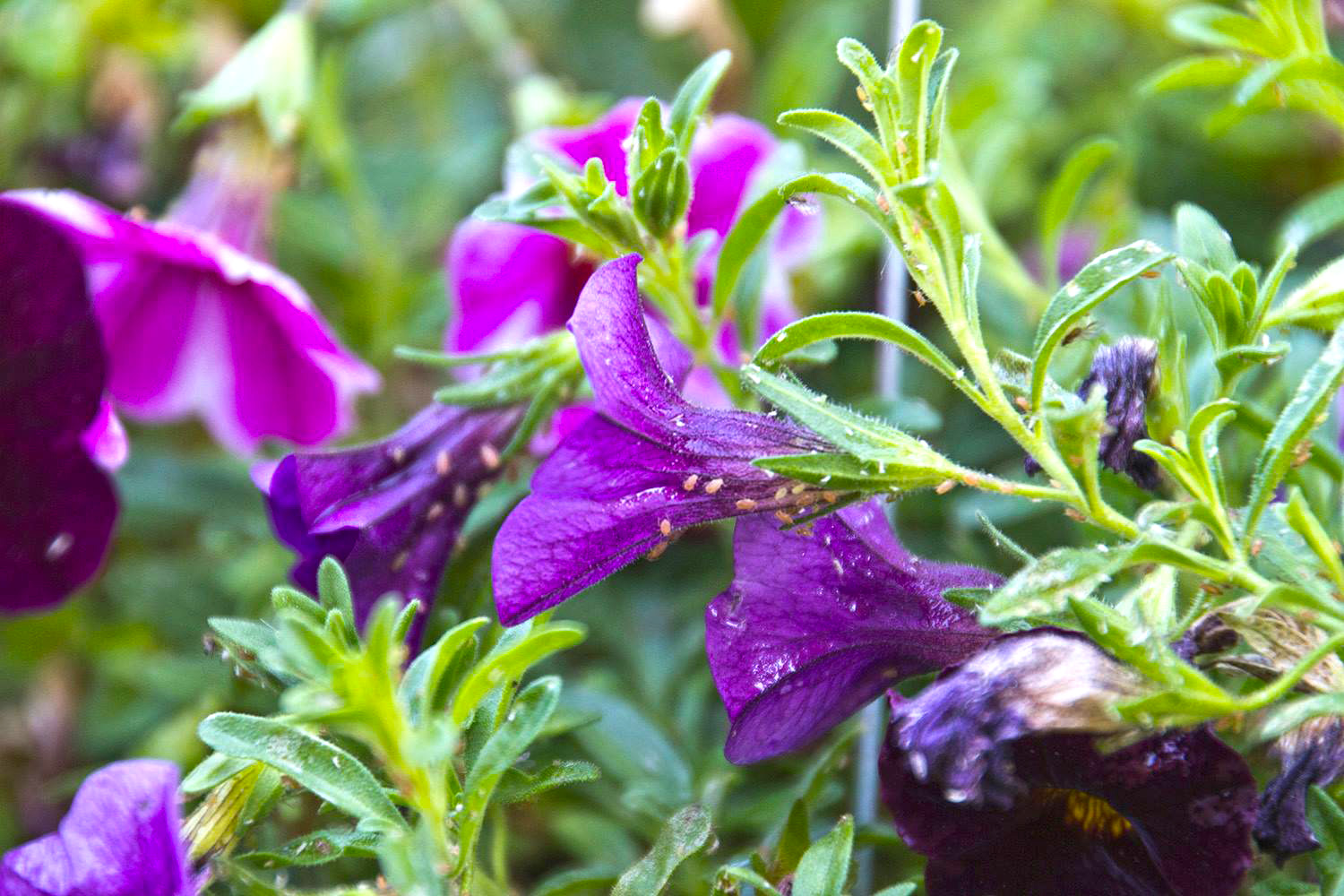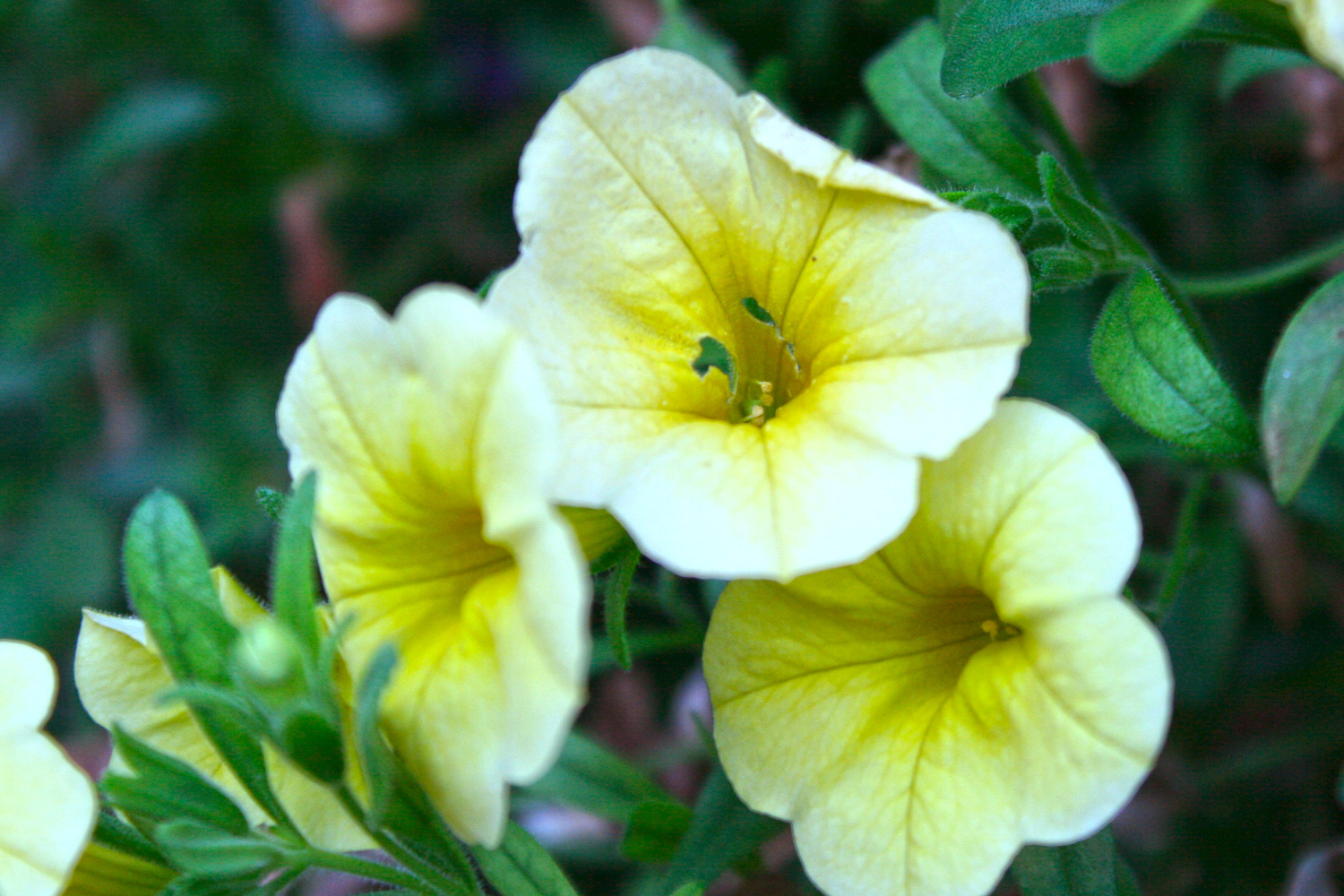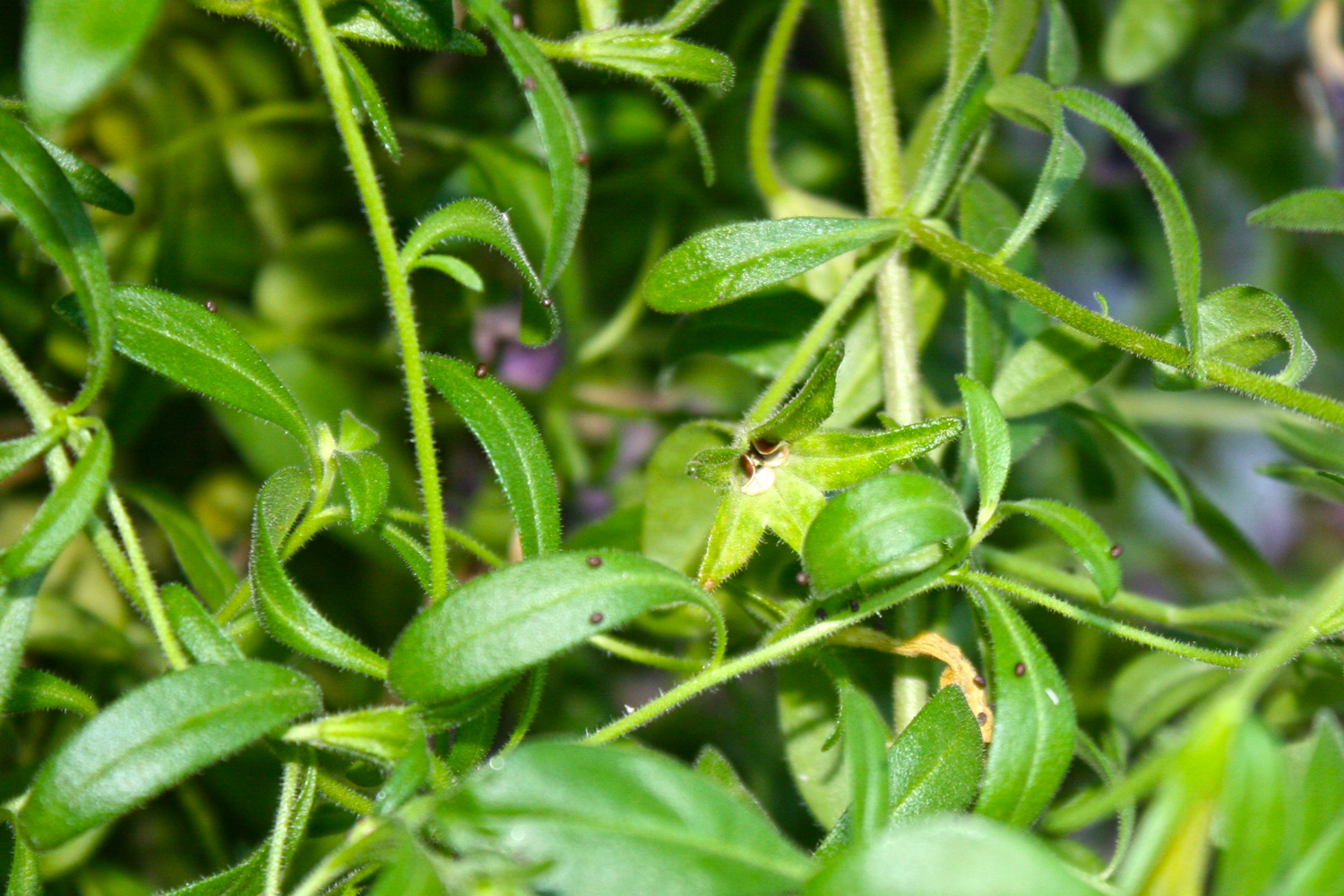Hanging Basket Care
Tips for Long-Lasting, Colorful Planters Summer to Fall
What about bugs?
Here’s the sad truth about hanging baskets: bugs love them almost as much as we do. Each year as we head into summer people tell us how they’ve noticed that their baskets are looking tired and aren’t flowering as much. They often assume that the plants are finished blooming. Typically though, the cause is bugs.
Hanging baskets can and should bloom from spring through fall.
If you are proactive in pest control with your baskets, and learn to recognize problems as they start you will be much more satisfied with your planters.
Aphids, thrips, spider mites, budworms, cucumber beetles, earwigs, slugs… these can all wreak havoc on annuals in baskets. It can seem a little overwhelming, so let us simplify.
Aphids
Aphids are very common. It would be unique not to have them on baskets at some point. They will start showing up mid spring and get worse from there. Fortunately, there are a lot of options for treating them and the treatments for aphids also deal with most of the other insects as well.

Caterpillars
Budworms are another very common pest that afflicts hanging baskets. These caterpillars are masters of camouflage. You won’t see them, but you can see signs of their presence. Be on the lookout from early summer and later. They specialize in eating flowers, so watch for holes in the blooms or entire flowers eaten. You can also recognize them from their little droppings on the leaves.


As soon as you see signs that they are active you will need to treat the plants with a specific spray. It’s different than what you’ll use for aphids.
That’s it, two types of treatment will help eliminate bug issues and get you back to gorgeous baskets.
Talk with the Youngs team for help choosing the treatments that are right for you, or help with additional questions.
How Much should I water?
Hanging baskets can dry out pretty quickly. They have lots of plants drawing water from a relatively small container. To promote healthy growth it’s important to keep them well hydrated.
Bigger is Better
Bigger baskets are going to be easier to keep happy. A 12″ basket has roughly 30% more soil than a 10″ basket. A 14″ basket has about double the soil of a 12″. More soil means a larger water reservoir for the plants.
Frequency
How often you actually water will really depend on the location of the basket and the time of year. The soil should dry out between watering.
April & May: During these months water every 2 to 3 days depending on the weather. Don’t water if the soil is sopping wet.
June, July, August & September: Throughout the summer your baskets will need watered daily, rain or shine. On the hottest summer days, with temps over 95 degrees you may need to water twice a day.
Some products, like Soil Moist, are a great option to help decrease the frequency of watering.
When should I fertilize?
Like with water, in hanging baskets there are a lot of plants needing nutrients from a relatively small container. To keep the plants blooming continually they will need a good fertilizer schedule.
To coax the most blooms possible from your baskets you should use two levels of feeding.
Slow Release
Use a high quality slow release fertilizer. This will give the plant all-around nutrition every time you water. Healthy roots and growth will be able to produce and support more flowers.
We HIGHLY recommend using Youngs Slow Release fertilizer. It is rated to continue feeding for 4 months, but with the more frequent watering that hanging baskets need we’ve found that it should be applied to baskets every 6-8 weeks. EVERY SINGLE basket that enters Youngs is fed with this… it is that crucial for baskets.
Water Soluble
In addition to the slow release, you should also use a water soluble fertilizer. This is something that you use several times a week as you water. Youngs Garden has many options available. Using these will help your baskets bloom longer and stay beautiful.
Do I need to dead-head?
The idea behind deadheading is that removing the old, spent blooms will then encourage new flowers to grow. Whether or not you need to deadhead your hanging baskets will depend on what plants are in them.
Begonias – Not needed (but can help prevent disease)
Fuchsias – Not needed (but can help)
Geraniums – Yes, deadhead
Million Bells – Not needed
Pansies – Yes, deadhead
Petunias – Yes, deadhead
Mixed Baskets – Depends on what is in the basket. These varieties are commonly included in mixes:
Bacopa – Not needed
Bidens – Not needed
Ivy Geranium – Not needed
Lobelia – Not needed
Verbena – Yes, deadhead
Trimming your basket can coincide with when you would want to deadhead. Hanging baskets can be rejuvenated mid-summer by a light trimming. Trimming also promotes branching and creates a more full basket. At Youngs Garden, we cut our baskets back several times while growing to create full and beautifully blooming baskets.
How do I get uniform baskets?
One unique challenge for hanging baskets is that one side of a 360 degree planter is more shaded than the other. Especially with sun baskets this means that one side of the basket won’t bloom as much. Use a hanging basket swivel and spin the basket a little bit each week keep it blooming full and uniform.
